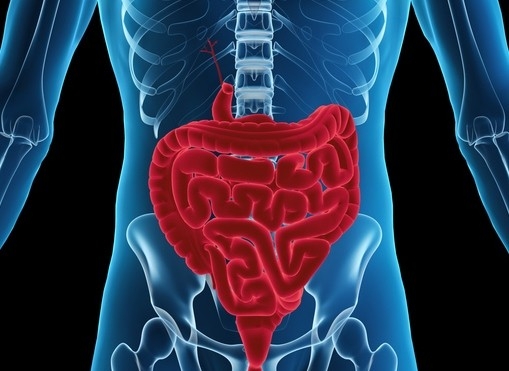The microbiome and personal nutrition in food and beverages: ‘There is so much potential for innovation’

The most well-developed food and beverage segment focused on microbiome health is the probiotic market, which was valued at US$53.72bn in 2020. According to estimates from Verified Market Research, sales of probiotics are likely to rise by a CAGR of more than 6% through to 2028, rising to a value of $90.57bn.
Probiotics are living microbes – or ‘good bacteria’ – that live naturally in the body. Rising demand for probiotic-fortified foods is the result of health benefits, increasing consumer awareness of probiotics and a growing emphasis on preventive healthcare. But they are just one product segment helping to deliver microbiome health. We have also seen a proliferation of products containing postbiotic and prebiotic ingredients.
The ‘next-generation’ of food and beverage products and services targeting the microbiome offer manufacturers an important development opportunity, according to the view of experts at consultancy group Sagentia Innovation. “There is so much potential for innovation,” reflected Dr Tatiana Sergeenko, Principal Technology and Innovation Consultant at Sagentia Innovation.
She believes that much of this potential will be unlocked by the development of more robust science and research around our understanding of the interplay between the microbiome, diet, lifestyle, genetics and health outcomes. “The microbiome is set to feature alongside host genetics and phenotypic data in the delivery of high-resolution personalisation. We’ll also see data generated by wearable, biosensor and diagnostic technologies being leveraged to influence consumers’ food and beverage choices,” precited the innovation expert.
Dr Sergeenkio has just authored a new white paper examining developments in the space that, she noted, have been a long time in coming. Our understanding of the has become clearer with each year that has passed since Science magazine named the microbiome one of the breakthroughs of the year a decade ago. But despite the progress that has been made we are still only seeing ‘tantalising glimpses’ of the full potential microbiome health will have to boost overall wellbeing.
“Right now, the most researched area is the gut microbiome and its effect on gastrointestinal disorders. Understanding of gut microbiome profiles and the role of microbiota, including their functional capacity and dynamic interactions with hosts and other microbes, is more advanced than for other microbiome profiles. This facilitates the engineering of personalised gut microbiome-based intervention strategies not just for gastrointestinal disorders, but also for a diverse spectrum of fields and therapeutic areas, including immunity, mental health, and sleep,” Dr Sergeenko told FoodNavigator. “The microbiome is currently the focus of intense research for many health conditions and disorders. There is a fast-growing collection of data describing the structure and functional capacity of other microbiomes, especially the skin microbiome.”
While there is much potential for food and beverage innovation in this space, data surrounding specific microbiome biomarkers remains inconsistent, the researchers noted. Innovation strategies must consider technical feasibility and commercial viability as well as regulatory matters.
Personalisation underpinned by science ‘currently scarce’
Dr Sergeenko believes that the personalisation aspect of innovative food and beverage propositions that target the microbiome can be ‘daunting for the industry’ and therefore require a holistic technical and strategic approach.
“There are so many challenges to overcome,” she explained. “Companies will need to prove that certain microbiome interventions make a positive difference as well as offering personalised products at scale in a commercially viable way. None of this is easy.”
Opportunities in personalised microbiome solutions first need to be defined and proven by science, with the current state of research having yet to ‘yield conclusive insights’.
Today, this means there are some limitations to the work brands can do and the claims they can make. “Manufacturers, especially large corporates, are trying to do what is possible within scientific and regulatory boundaries. There is potential to go further, but the barriers to developing impactful commercial propositions are significant. The most critical of these is gathering robust clinical evidence to support benefit claims,” Dr Sergeenko told us.
In fact, Dr Sergeenko continued, some fundamental issues still need to be resolved. “So far, there is no single definition of a ‘healthy’ gut microbiome or of dysbiosis, and microbiome data is not an established biomarker. It is still early days, so research is focused on trying to establish links between the microbiome and disease, as well as methods of analysis. Another challenge is the need for a standardised way of processing of stool samples, and this situation may not improve in the immediate future.”
The evolving nature of microbiome science and the challenges of bringing personalisation to the mass market make it difficult for companies to develop sound commercial propositions that could be deployed at scale. “Many variables can influence approaches to personalisation, especially when the science is still evolving, so it’s difficult for companies to create solutions that are relevant to target markets. What’s more, there are different levels of personalisation, from the most bespoke individual level to a larger community or population level.”
If grappling with these questions is challenging for F&B businesses, it can also be intimidating for shoppers. “It can be daunting for consumers to decide which solution is best for them when they are overloaded with information. This landscape makes great claims, but personalisation opportunities underpinned by robust science are currently scarce.”
Beyond segmentation? The potential of personalisation on the mass market
Nevertheless, the innovation expert continued, microbiome research has ‘accelerated dramatically’ in recent years, driven by advances in technology and significant reductions in the cost of analysis. Functional studies of the gut microbiome are increasing, with researchers using whole genome sequencing and metabolomics to study changes in gut metabolite levels. “Metabolites are seen as more directly linked to human health and disease than taxonomies. Such research will unlock a wealth of data to enable personalisation,” Dr Sergeenko.
She said it is ‘difficult’ do say whether the food and beverage industry is currently geared to a model that supports the mass rollout of personalised approaches because ‘the space is evolving as we speak’. She noted that there is an overlap with consumer healthcare when it comes to personalised packaged products. “However, personalised nutrition-based fulfilment services involving supplements and meal kits already exist. Both categories are likely to grow in the future. Personalised microbiome-based propositions may take a little longer,” she predicted.
To deliver true personalisation at scale, the food sector would need to move beyond segmentation and develop personalised products that are both affordable and profitable. “Mass personalisation may be achievable at scale. However, micro level personalisation for individuals will need disruptive business models that combine products and services to achieve economies of scale,” Dr Sergeenko observed.
So, is there a profitable path to personalised products targeting microbiome health?
Dr Sergeenko responded: “I believe segmentation will evolve into mass personalisation or stratification first. A small number of products and services may be able to deliver individualised personalisation, whereas the rest will target specific population cohorts or need states. These are likely to be based on factors such as lifestyle, demographics and health conditions.”


